I have received several emails recently with bees for identification, and there has been a trend.
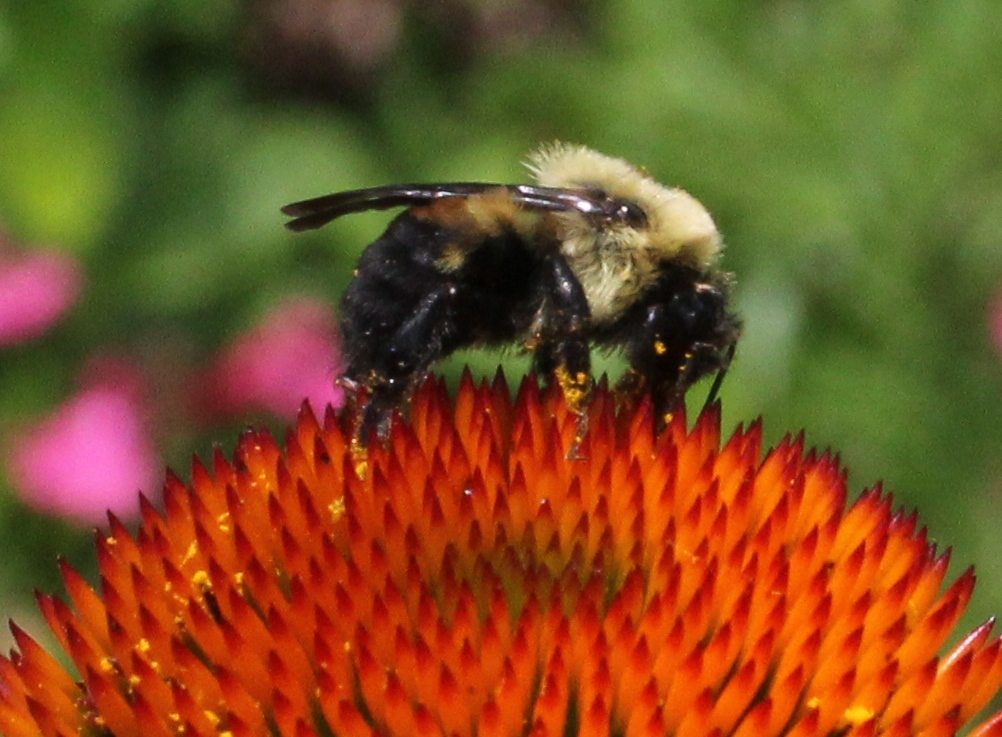
Several of the bees were Bumblebee species that would not have been a challenge for the person sending the email–if they had been the usual size. Early in the spring the truly huge Bumblebee queens are the only Bumblebees out (for all species of Bombus). They are impressively large, and beefier overall than a standard brood of female working class bees. Only the Queens overwinter, and they do that alone in a specially provsioned overwintering burrow. They’ve already mated and been fertilized in the late summer or fall. The rest of the colony dies when cold weather sets in, leaving the new queens as the only survivors.
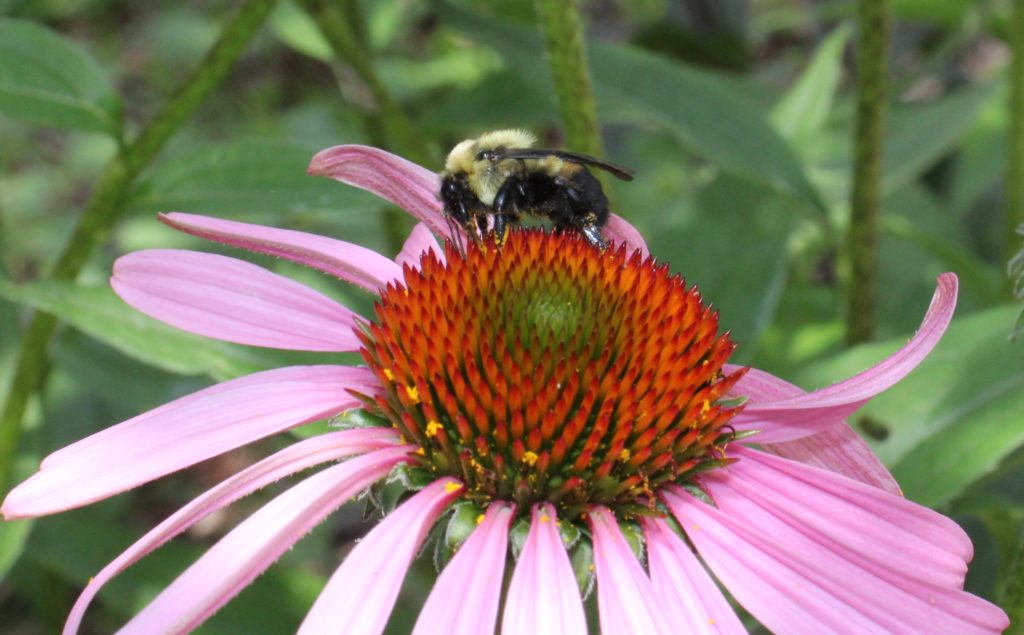
In the spring, those queens will emerge from their private quarters, forage for nectar and pollen, scout out a new location for a colony, and begin to lay eggs and tend them. When that first brood emerges as adult bees, some of them are noticeably undersized compared to the bees earlier and later in the season. The size of the adult bee is related to the amount of food that larva has consumed. Whether the queens rush the first generation along so that they can help with the work of the colony, or whether they simply can’t find enough pollen and nectar to feed the kids, I don’t know. In any case, it’s not too unusual to see a significantly “undersized” Bumblebee at this time of year in North Texas. Once the queen has enough workers to tend the nest functions and do the colony’s foraging work, she stays in and just lays eggs. It’s her primary job once the first generation of helpers is ready.
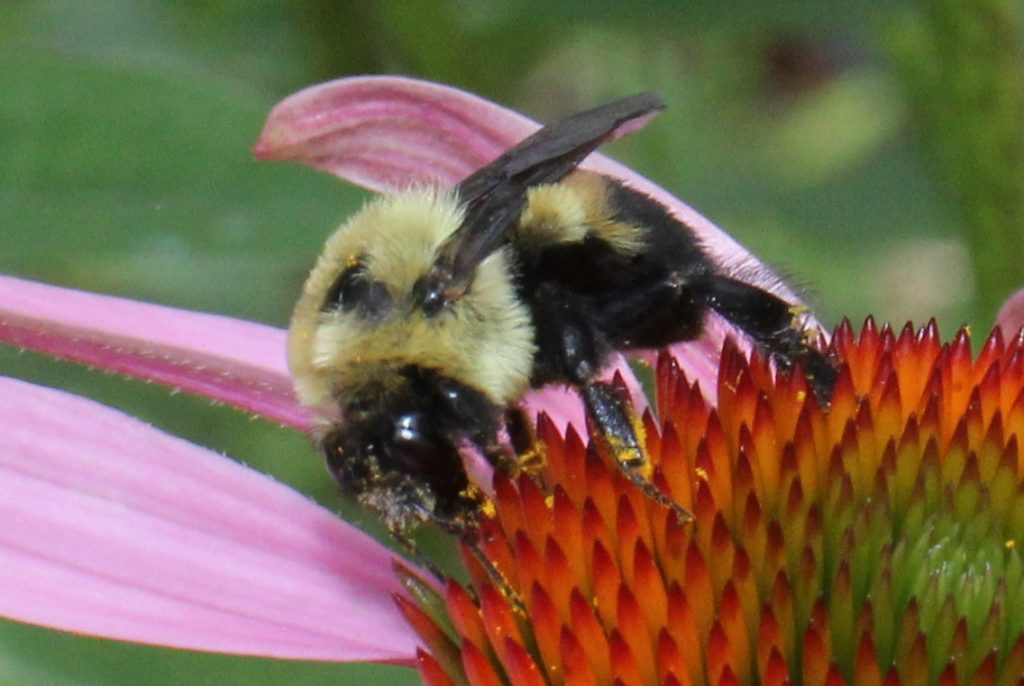
Wedensday, May 27th, I visited the Heard Museum in McKinney, Texas, and was pleased to find this extra tiny Brown-belted Bumblebee, Bombus griseocollis, patiently posing for photos. Their queens were out foraging in March and April. I expect I’ll be able to come back later this summer and find her larger but still ordinary sized sisters. The new queens won’t be born until later in the summer, and when they are, there will be some males that develop at the same time. The yearly business of the hive will wind down in late fall, and there may be another cohort of undersized workers toward the tail end of their colony season if pollen and nectar are in short supply due to drought.
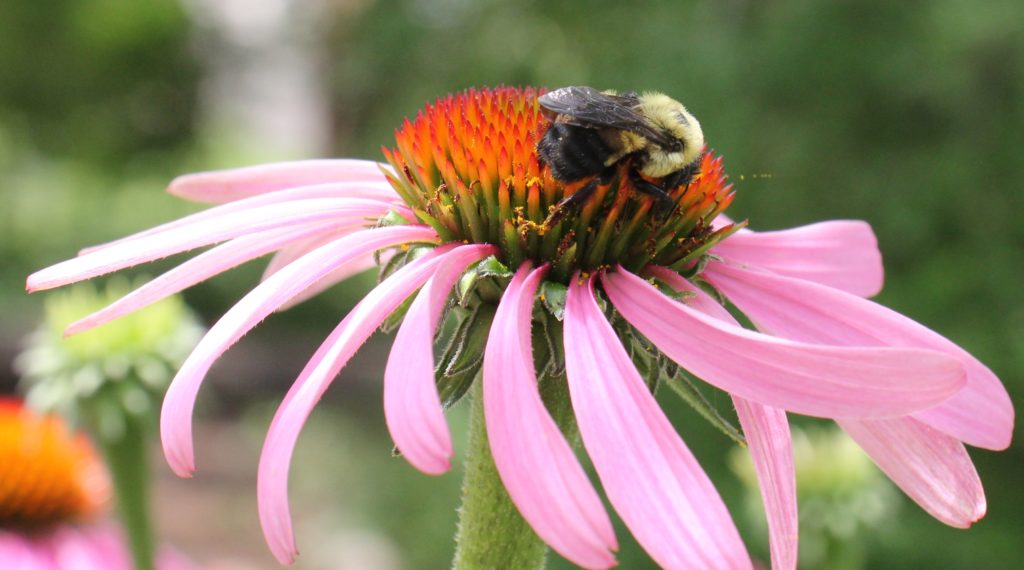
The following year, the cycle repeats: huge queens, itty bitty bees, normal sized workers, and then new queens and males, accompanied–just maybe–by some more itty bitty bees. Tell me again why these are not made into plush toys? I think they’re adorable.
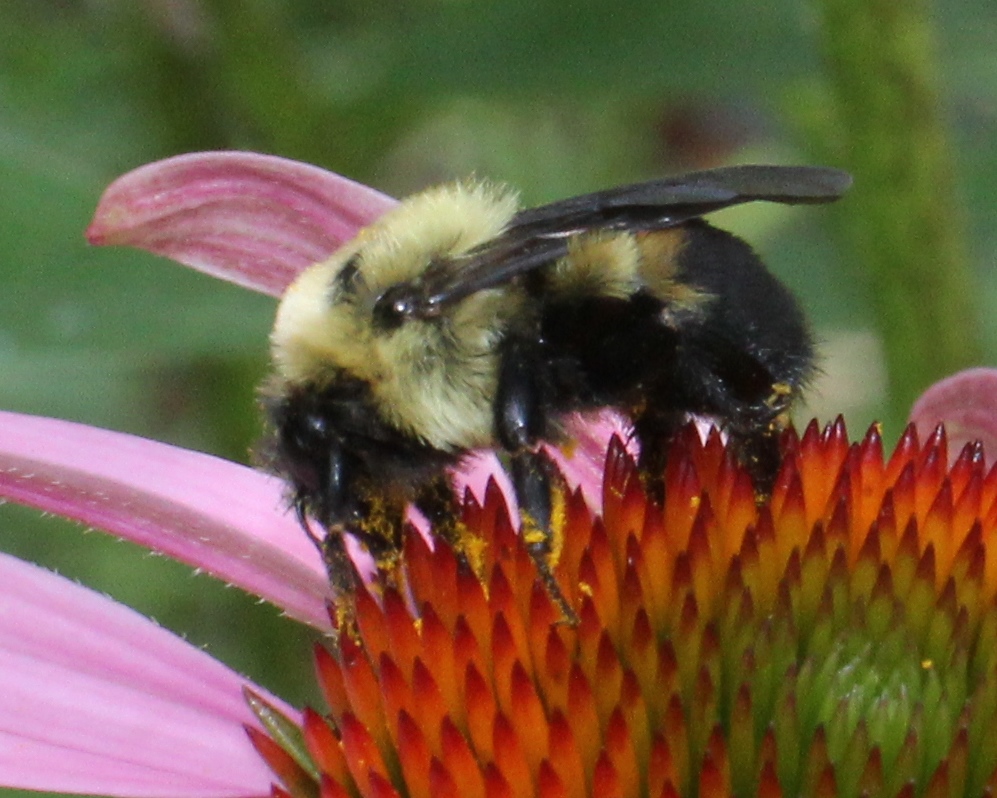
To clarify any confusion: I wrote and posted a very similar piece on the Texas Native Bee Co-op Facebook page. Nobody has stolen either photos or words from anyone.